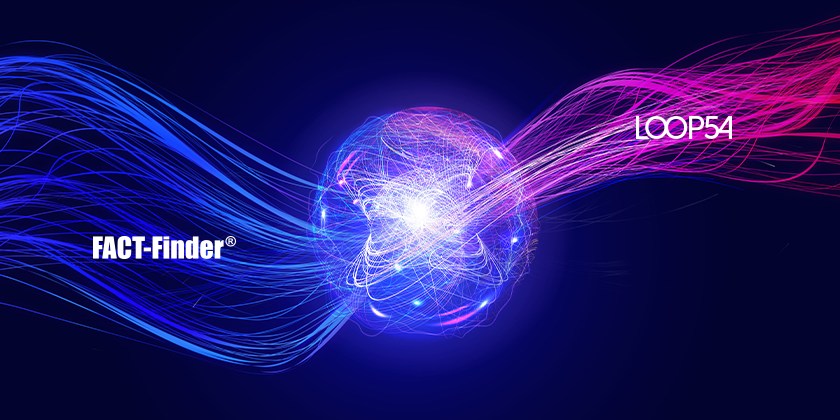 In October last year, FACT-Finder acquired Loop54, the Swedish market leader for smart personalization technology in eCommerce and Next Generation Blixt brings now the technologies together, providing its users with the best of both worlds – search and personalization.
In October last year, FACT-Finder acquired Loop54, the Swedish market leader for smart personalization technology in eCommerce and Next Generation Blixt brings now the technologies together, providing its users with the best of both worlds – search and personalization.
Personalization is playing an increasingly important role in e-commerce in the 21st century. This applies both to end customers, who prefer to shop in online stores that offer them the best customer experience, and to retailers, who have to address their customers more and more individually in order to achieve higher conversion rates and sales.
Personalization is not just personalization
But there are still a lot of online shops that play out individual offers based on customer groups, an approach that has so far only been used due to a lack of alternatives, but no segmentation can reflect the individual context of the customer with all personal wishes and requirements.
"Personalization by segmentation is dead," said Robin Mellstrand, chief strategy officer at FACT-Finder and Loop54. "Today, shop owners need to be able to offer their customers truly relevant shopping experiences, in real time."
Next Generation Blixt now makes that possible by combining the patented search algorithms of FACT-Finder with GOLEM, Loop54's artificial intelligence. It offers that way the highest standard of search precision, performance and setting options in combination with an AI for interpreting, optimizing, and personalizing the results.
Essentially, Next Generation Blixt provides users with three innovations:
- Wisdom of the Crowd
Until now, it has been a real challenge to show the most relevant products to each customer at any given times, because the context of human search queries is difficult for machines to interpret.
Anyone searching for "PS4 game" probably wants to buy a game for the PlayStation 4. But if you're only looking for "PS4", you don't want to buy a game, but the actual console. Humans understand this distinction intuitively, but machines don't, because they will find "PS4" in the product data in both cases. And that's exactly what leads to misunderstandings and a frustrating shopping experience for customers.
Next Generation Blixt already understands what is meant by this search query within the first customer sessions. Where previously countless interactions were necessary (big data), an absolute minimum of learning data is sufficient to understand the context of each search query.
Based on the shop's individual product catalogue, the GOLEM algorithm develops a neural network that maps the relationships between different products. Rather than relying on data about individual products, GOLEM generates product-independent neurons that collect knowledge about a specific product type and its possible attributes. Since information is exchanged between similar products in this way, only a small amount of learning data is required. Even with changes to the range, the search result quality remains consistently high, and information about personal preferences and the search intention spreads within the neural network; hence, each interaction impacts thousands of products instead of just one. - Real-time personalization
However, the context of a purchase journey is not only influenced by general search behavior (wisdom of the crowd). Individual interests and preferences also determine the intention behind a search query, which can be meant in completely different ways based on the intent. Next Generation Blixt ensures that search results always fit the customer's individual context. The personalization can either take place within one and the same session or across sessions with a user ID. - Recommendations, powered by AI
In a shop range with 1,000 products, recommendations can still be configured manually, but when it comes to tens of thousands of articles, this is impossible.
So far, retailers with large product assortments have relied primarily on data about products that are frequently bought together to have recommendations generated automatically. Unfortunately for them, in most cases, the data is not sufficient to provide a truly relevant experience. In addition, recommendations are limited to popular products – ignoring new products and niche products with higher relevance.
Next Generation Blixt takes recommendations to a whole new level – without manual effort and with very little data. Just as with the personalization of search results, GOLEM understands how products relate to each other. Whether on the product detail page, in the shopping cart or elsewhere in your store, the AI shows your customers exactly the recommendations that best fit the context and the purchase intention of your customers.
Three different recommendation types are available:
- Personally tailored product recommendations: Based on your customers’ individual purchase patterns, FACT-Finder generates personalized recommendations that match the product they are currently viewing, the context, and purchase intent. This is a reliable way to increase your customers’ shopping carts and thus your average order value.
- Similar products as purchase alternatives: With its extensive understanding of the product range, our AI algorithm can also recommend alternative products. This type of recommendation is ideal for inspiring customers and keeping them in your store – even if they are still undecided or haven’t found their desired item right away.
- Manual recommendations as a complement: FACT-Finder Next Generation Blixt can provide 100% of your product recommendations and automatically increase order value. In some cases, however, you may want to have a say in what is recommended – for example, in the case of very frequently clicked products. Manual optimizations can still easily be implemented with just a few clicks, giving your team full convenience and flexibility. Your manually created recommendations are always prioritized by FACT-Finder and all remaining recommendation slots are then filled with the most relevant recommendations from the AI.
By Daniela La Marca


